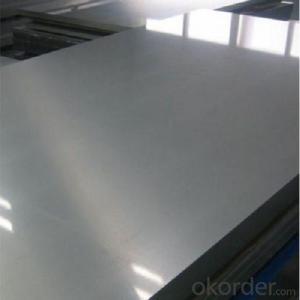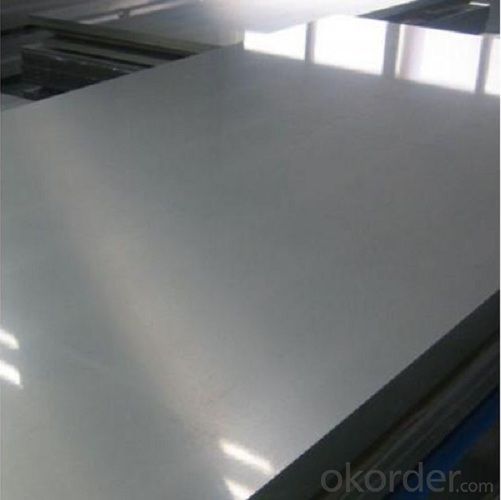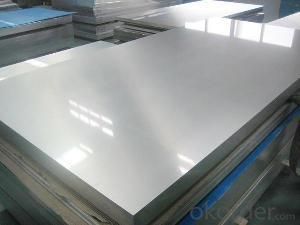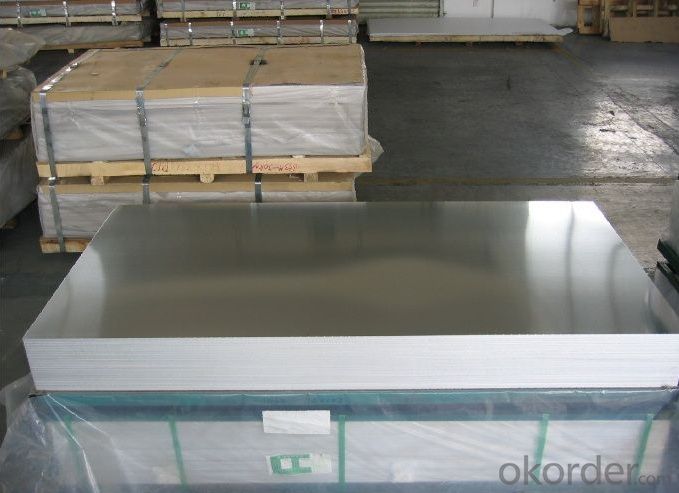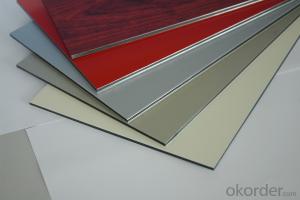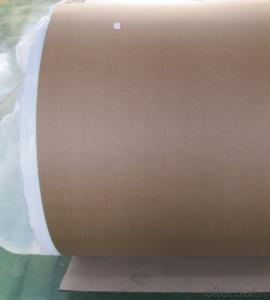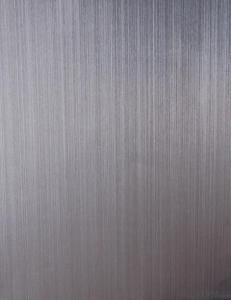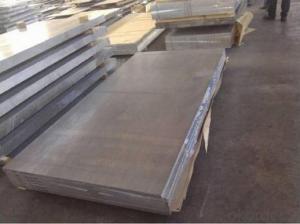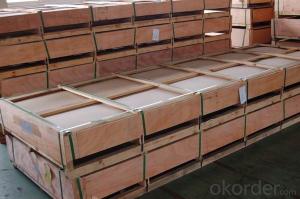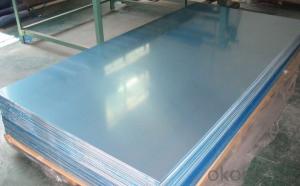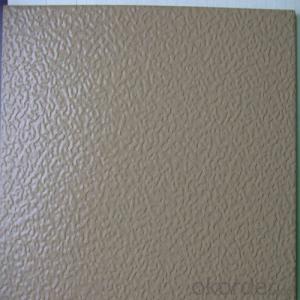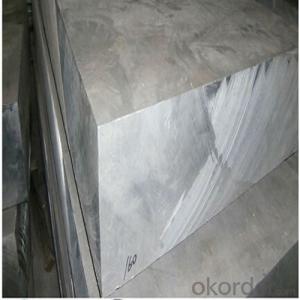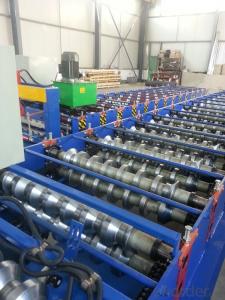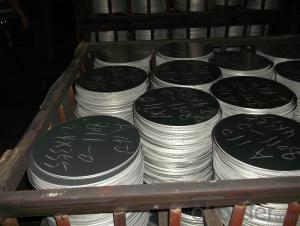Painted Aluminum Sheets 4x8 for Building Construction - 5052 Aluminum
- Loading Port:
- Shanghai
- Payment Terms:
- TT OR LC
- Min Order Qty:
- 2.5
- Supply Capability:
- 5000 m.t./month
OKorder Service Pledge
OKorder Financial Service
You Might Also Like
l Product Introduction
Aluminum sheet is also known as Treadplate, Floor Plate, Chequer Plate, Checkered Plate, Chequered Floor Plate, Checker Plate and Check Plate. It is made of anti-corrosion aluminum alloy stock, rolled with special and beautiful embossing shape. It has the property of anti-sliding, anti-corrosion, easy cleaning and high mechanical strength.
We supply a range of aluminum grades and temper with customized sizes.
1xxx: 1050 1060 1100 1200 1070 1235
2xxx: 2024
3xxx: 3003 3004 3005 3105
5xxx: 5005 5052 5454 5754 5456 5083 5182 5086 5251
6xxx: 6061 6063
7xxx: 7075
8xxx: 8011
Thickness: 0.2-300mm
Width: 200-2600mm
Surface: Mill finish, Anodized,Polished,Brushed
Coating: PVC/PE coated
Application: construction, decoration, automobile, electronic, machinery, boat
Standard: ASTM B209
l Packaging & Delivery
Packaging detail: wooden cases that are suitable for long distance exporting
Delivery detail: 25-30 days after receiving L/C or payment in advance
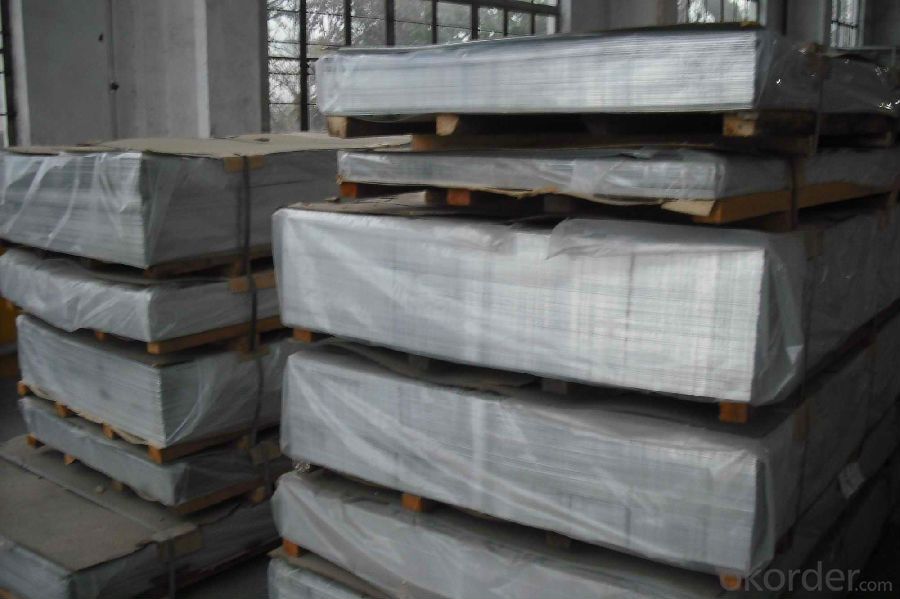
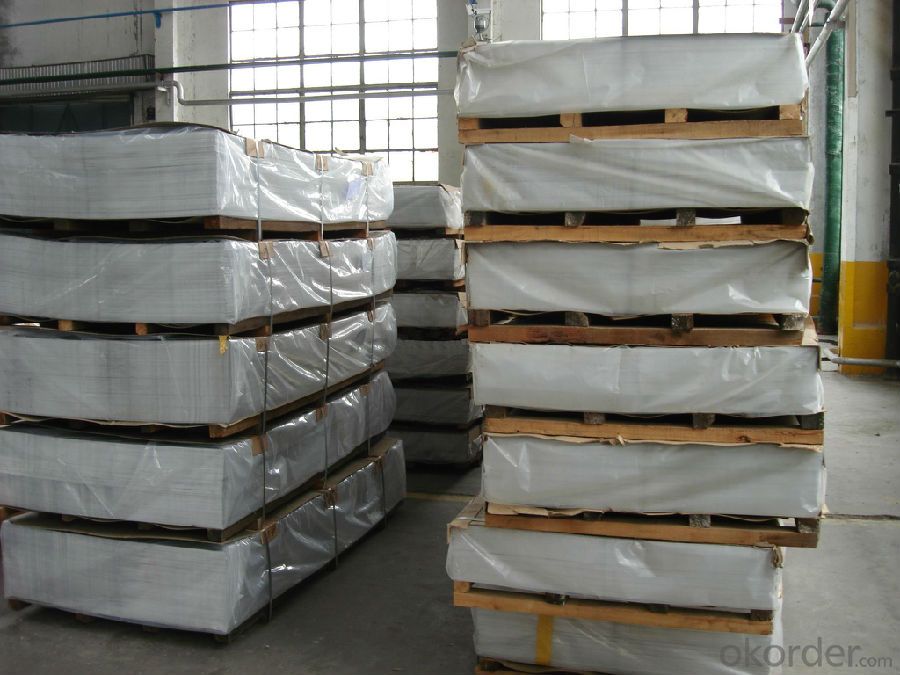
l Company Profile
CNBM International Corporation, China National Building Materials (Group) Corporation, is one of the largest companies in China building material & equipment industry, with 42,800 employees and sales in 2005 of US Dollar 4.395 billion. In 2006, China National Building Material Company Limited was listed on Hong Kong Stock Market with the stock code as 3323.
The business scope of CNBM covers from manufacturing and sales of a series of building materials to scientific research and design, import and export trade. In many of these fields, CNBM is playing the leading role.

l CNBM World Wide
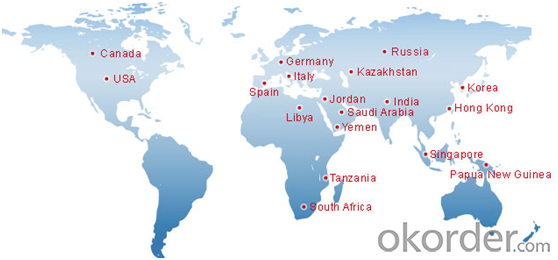
l Product Images

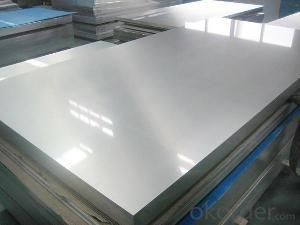
l Certificates
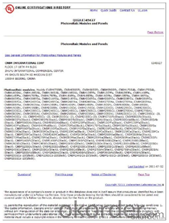
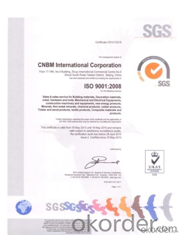
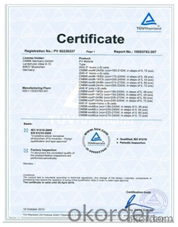
l FAQ
Q: Do you provide free samples?
A: Yes, free samples will be sent to you on freight at destination.
Q: Can I get your latest products catalogue?
A: Yes, it will be sent to you in no time.
Q: What is the MOQ?
A: 2.5 tons
Q: What are your payment terms?
A: We accept L/C, T/T.
- Q: Can aluminum sheets be soldered?
- Soldering aluminum sheets is indeed possible, but it necessitates specific techniques and materials. Due to its high thermal conductivity and low melting point, traditional soldering methods pose a challenge when working with aluminum. Nevertheless, specialized soldering techniques, like the utilization of flux and a soldering iron with a high temperature, can successfully solder aluminum. Furthermore, a particular type of solder known as aluminum solder or aluminum flux-cored solder is essential, as regular solder does not adhere well to aluminum surfaces. Thoroughly cleaning the aluminum surface before soldering is crucial to ensure a sturdy bond. In summary, although soldering aluminum sheets may be more intricate compared to other metals, it is achievable with the appropriate tools, materials, and techniques.
- Q: Are aluminum sheets suitable for transportation applications?
- Yes, aluminum sheets are suitable for transportation applications. Aluminum is lightweight, durable, and corrosion-resistant, making it an ideal choice for various transportation components such as body panels, frames, and structural parts in vehicles, aircraft, and ships. Its high strength-to-weight ratio allows for improved fuel efficiency and load capacity. Additionally, aluminum is easily recyclable, contributing to sustainability in the transportation industry.
- Q: What are the different thicknesses available for aluminum sheet?
- The different thicknesses available for aluminum sheet vary depending on the specific requirements and applications. Common thicknesses for aluminum sheet range from 0.016 inches (0.41 mm) to 0.25 inches (6.35 mm), with numerous options in between. The appropriate thickness is determined by factors such as the intended use, structural requirements, and aesthetic preferences.
- Q: Can aluminum sheet be used for food packaging?
- Yes, aluminum sheet can be used for food packaging. Aluminum is a popular choice for food packaging due to its unique properties. It is lightweight, flexible, and has excellent barrier properties that protect the food from moisture, oxygen, and light. This helps to extend the shelf life of the products and maintain their freshness. Aluminum sheet is commonly used for packaging various food items such as beverages, snacks, dairy products, and ready-to-eat meals. Additionally, aluminum is non-toxic and does not react with food, making it safe for direct contact with consumables. Its ability to be easily formed into different shapes and sizes also makes it suitable for various packaging requirements. Overall, aluminum sheet is a reliable and widely used material for food packaging due to its durability, protective properties, and safety standards.
- Q: Our production needs a large number of plating aluminum plate, consult domestic and imported aluminum plate difference?
- Guangdong Huayuan prosperous is the largest aluminum plate supplier 021-56808701, in Shanghai / Tianjin / Chongqing have logistics and storage, domestic aluminum plating surface coating treatment is less than imports, stamping coating is easy to fall,
- Q: My aluminum storm windows are wasting energy in my home, however, the $7000 estimate to replace them is beyond (well beyond) my comfort zone.I know aluminum is a great conductor of hot and cold. I was considering cleaning the frames, and then coating them with a brush on clear or possibly white liquid rubber to reduce the conductivity. Any idea as to how much benefit I'll realize? Is flammability going to be an issue?I need some solid answers please. Trolls go get your two points elsewhere.Thanks.Your help is much appreciated.
- There are rubberized automotive undercarriage coatings that are designed to adhere to all metals, including aluminum. That would solve the problem of finding something that can stick to the frames, but I honestly don't know if it would help with the heating issue. I also believe they only come in black, I'm not sure if there's a white but it could be painted, Chassis Saver by Magnet is one I believe, the other is a Por 15 product. I'd like to know if it works though, I've got similar problems in my house.
- Q: What are the different methods of surface engraving aluminum sheets?
- Aluminum sheets can be surface engraved using various methods, each with its own unique advantages and suitability for different applications. One method is mechanical engraving, which involves physically removing material from the aluminum sheet using a rotating cutting tool like a milling machine or a router. This precise and versatile technique allows for intricate designs and deep engravings, making it commonly used for signage, branding, and decorative purposes. Another method is laser engraving, a modern and highly precise technique that uses a laser beam to vaporize or melt the surface of the aluminum sheet, creating a permanent mark. With great control over the depth, speed, and intensity of the engraving, laser engraving produces detailed and accurate results. It finds wide application in industries like aerospace, automotive, and electronics for part identification, serial numbers, and barcodes. Chemical etching, also known as chemical milling or photochemical machining, is a process where the aluminum sheet is coated with a photosensitive mask and exposed to UV light through a stencil or artwork. The exposed areas are then chemically etched to create the desired design. Chemical etching offers high precision, repeatability, and the ability to engrave thin lines or complex patterns. It is often used in electronic components, nameplates, and decorative applications. Diamond drag engraving involves using a diamond-tipped stylus to scratch or indent the surface of the aluminum sheet, creating the engraving. This method is commonly employed for industrial applications like part identification and serial numbering, as well as for creating durable and long-lasting markings on aluminum sheets. Lastly, rotary engraving utilizes a rotating cutting tool to remove material from the aluminum sheet, similar to mechanical engraving. However, it is typically used for larger and thicker aluminum sheets and finds application in industrial settings for marking, labeling, and identification purposes. Choosing the appropriate engraving method for aluminum sheets depends on factors such as the desired design, level of detail, durability requirements, and the intended use of the engraved product. Each method offers its own advantages and suitability for different applications.
- Q: What are the different methods of surface laminating aluminum sheets?
- There exist various techniques for surface laminating aluminum sheets, each with its own distinct advantages and suitability for different purposes. Some of the commonly utilized methods comprise: 1. Adhesive bonding: This involves the application of an adhesive layer between the aluminum sheet and the desired surface material. The adhesive is typically cured through the application of heat or pressure, resulting in a robust bond. This technique is versatile and can be employed with a range of surface materials, including wood, plastic, or glass. 2. Roll bonding: Also referred to as cladding or cold roll bonding, this method entails placing the aluminum sheet between two other metal sheets and subjecting them to high pressure to create a solid bond. Roll bonding is frequently employed in the production of composite materials, such as aluminum-clad steel sheets. 3. Thermal spraying: This process entails melting or heating aluminum powder and using a thermal spray gun to spray it onto the sheet surface. The molten aluminum solidifies upon contact, forming a durable coating. Thermal spraying is commonly used for corrosion protection or as a foundation layer for subsequent surface treatments. 4. Powder coating: In this technique, a dry powder paint is electrostatically applied to the surface of the aluminum sheet. The sheet is then heated, causing the powder to melt and form a smooth and protective coating. Powder coating offers exceptional durability, impact resistance, and a wide array of color options. 5. Anodizing: Anodization is an electrochemical process that enhances the natural oxide layer on the surface of aluminum sheets. By immersing the sheet in an electrolytic bath and applying an electric current, a controlled oxide layer is formed, providing corrosion resistance, improved adhesion for paint or adhesive, and aesthetic finishes. 6. Lamination with protective films: A plastic protective film can be applied to the surface of the aluminum sheet for safeguarding purposes during transportation, handling, or processing. These films offer temporary protection against scratches, abrasions, and dirt. These represent just a few among many techniques available for surface laminating aluminum sheets. The choice of method depends on factors such as desired properties, intended use, and specific application requirements.
- Q: Can aluminum sheets be used for storage tanks?
- Yes, aluminum sheets can be used for storage tanks. Aluminum is a lightweight and corrosion-resistant material, making it a suitable choice for storing various substances such as water, chemicals, and fuel. It offers excellent durability and can withstand harsh environmental conditions. Additionally, aluminum tanks are relatively easy to construct and maintain. However, it is important to consider the specific requirements of the substance being stored and consult with experts or engineers to ensure that aluminum sheets are the appropriate choice for the storage tank in question.
- Q: Are 101 aluminum sheets suitable for radiator manufacturing?
- Yes, 101 aluminum sheets are suitable for radiator manufacturing. 101 aluminum is a commercially pure aluminum alloy that offers excellent thermal conductivity, making it ideal for use in radiators. It is also highly corrosion-resistant, which is crucial for radiator applications where exposure to water and other fluids is common. Additionally, 101 aluminum sheets are lightweight and easy to work with, allowing for efficient radiator production processes. Overall, 101 aluminum sheets provide the necessary properties and characteristics required for radiator manufacturing.
Send your message to us
Painted Aluminum Sheets 4x8 for Building Construction - 5052 Aluminum
- Loading Port:
- Shanghai
- Payment Terms:
- TT OR LC
- Min Order Qty:
- 2.5
- Supply Capability:
- 5000 m.t./month
OKorder Service Pledge
OKorder Financial Service
Similar products
Hot products
Hot Searches
Related keywords
